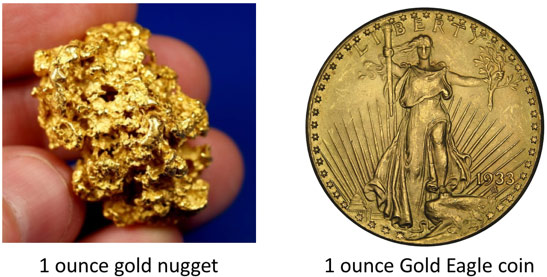What Is Gold: Asset, Commodity, Currency or Collectible?
by Arkadiusz Sieron, Market Oracle:
 What is Bitcoin? Is it just a payment system, money or investment asset? Nobody knows for sure – it generates enormous definition and classification problems. But it’s understandable, as Bitcoin in a new player in town. However, people also cannot agree on what gold really is. Let’s solve this problem once and for all. It will enable us later to adopt the right gold investing philosophy.
What is Bitcoin? Is it just a payment system, money or investment asset? Nobody knows for sure – it generates enormous definition and classification problems. But it’s understandable, as Bitcoin in a new player in town. However, people also cannot agree on what gold really is. Let’s solve this problem once and for all. It will enable us later to adopt the right gold investing philosophy.
Have you heard about Aswath Damodaran? You probably have, as he is a guru of fundamental valuation. So he classifies investments in four broad categories:
Cash generating asset – it’s an investment which generates or is expected to generate cash flows in the future. Here you can find businesses, stocks (residual cash flows), bonds (contractually set cash flows), real estate (one can rent them), or even options (contingent cash flows).
Commodity – it derives its value from its use as raw material to meet a fundamental need, whether it be energy, food or shelter. Think about oil, copper, soybeans, etc.
Currency – it’s a medium of exchange, a store of purchasing power and a unit of account that you use to denominate cash flows and is a store of purchasing power. The U.S. dollar and the euro are definitely currencies.
Collectible – a collectible has no cash flows and it is neither a raw material nor a medium of exchange. Instead, it can either have aesthetic value (think about Picasso’s paintings) or an emotional attachment (baseball cards). Its supply is limited.
So what is gold? Let’s start with answering what it definitely is not. Gold doesn’t generate any cash flows itself (unless it is lent out, but it’s something different then), so it’s not an asset such as shares or bonds. There are two consequences of that. First, without cash flows gold cannot be valued using standard valuation methods, such as DCF and so on. Second, gold doesn’t behave similarly to other assets, so its correlation to them is very low, hence it may serve as a portfolio diversifier.
OK, gold is not a cash generating asset. So – as a metal – it must be a commodity, right? Well, it’s true – but only partially. Gold has some industrial utility, that’s for sure. However, the technology demand is limited. According to the World Gold Council’s data, it accounts only for about 17.5 percent of the total demand for gold. But we know that the demand for gold is actually much bigger, as the WGC focuses on annual flows, neglecting the massive stocks of gold and the fact that the gold’s demand and supply comes from the marginal buyers and sellers who hoard a lot of bullion. Hence, gold is a commodity only in a miniscule part – it implies that we cannot value it as copper, just looking at the annual balance between production and consumption.
We get it. Gold is neither an asset, nor a commodity. So it’s practically useless, or it is a collectible, at best? Surely, some gold investment products can have aesthetic or emotional value (think about grandma’s jewelry or some rare coins). And one can argue that the value of gold is created only by its scarcity and expectations of future investors pricing it more highly than we do now, just like collecting baseball cards or stamps. However, this is not the distinguishable feature of the collectibles, but of other investments (why do people buy stocks which don’t pay dividends?) – and the media of exchange as well. Moreover, for most investors, aesthetic features of gold don’t matter – only its monetary aspects are relevant.
Read More @ MarketOracle.co.uk



